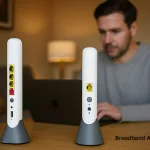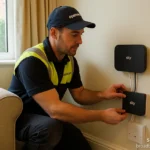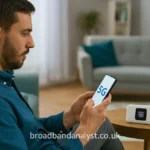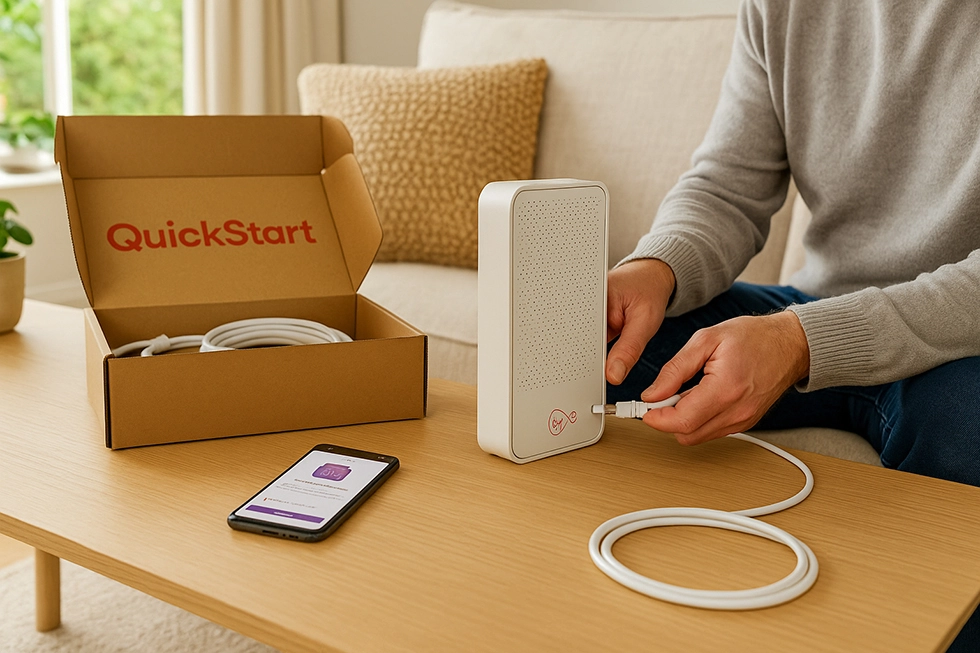Vodafone and Nokia have completed a live trial of a new broadband technology designed to reduce lag. The trial used Low Latency, Low Loss, Scalable Throughput (L4S) on a fibre-to-the-premises (FTTP) connection, including the in-home Wi-Fi network. Vodafone reported that latency was cut by up to 94% during cloud gaming and video calls.
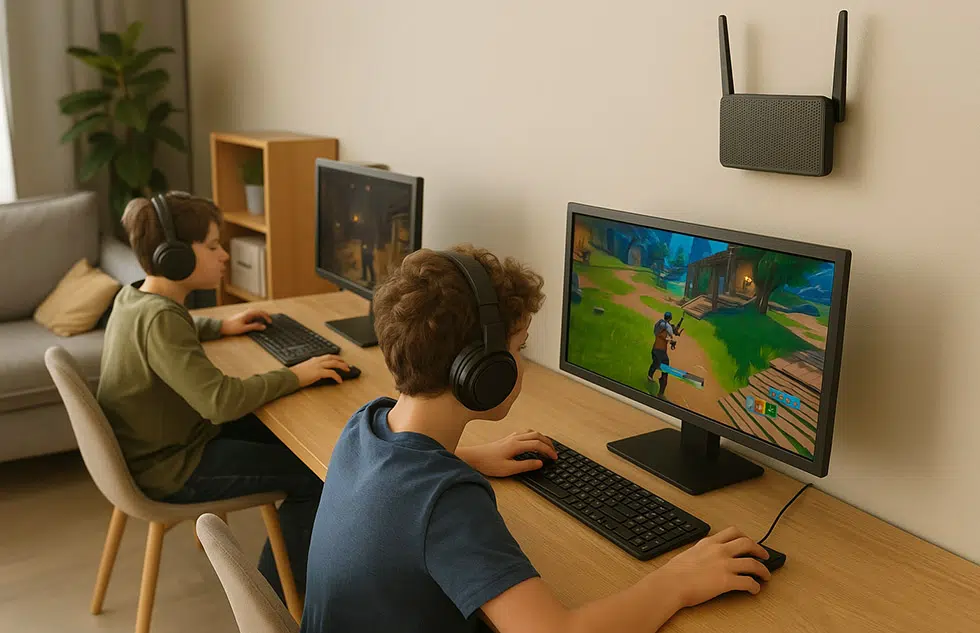
It was the first time L4S had been tested on a live household connection rather than in a lab environment. The trial took place in Istanbul on Vodafone Türkiye’s fibre network, using Nokia equipment and Bell Labs technology.
Why latency matters as much as speed
Download speed is often the headline figure when comparing broadband plans, but latency is just as important. Latency measures the round-trip time it takes for data to travel from a user’s device to a remote server and back. Fibre users typically see baseline latency of between 2ms and 10ms.
The problem comes during busy periods. When connections are congested, packets can queue in buffers inside routers and modems. This increases delay to hundreds of milliseconds and affects interactive applications most. Cloud gaming, competitive online games and video calls can all feel unresponsive. Even a delay of 100ms can be enough to disrupt gameplay or cause stuttering in meetings.
What L4S is designed to do
L4S changes the way networks handle congestion. Instead of allowing long queues to build, it marks packets with detailed congestion signals. These signals instruct devices and applications to adjust their sending rate before queues grow too large. The system is supported by a dual-queue design in routers, which allows real-time traffic such as video calls or gaming to bypass large downloads.
This approach means high throughput and low latency can co-exist on the same line. During the trial, latency dropped from around 220ms under heavy congestion to just 4.7ms. Users were able to continue gaming and making video calls with no noticeable lag.
Why Vodafone is interested in L4S
Vodafone has been expanding its full fibre and 5G networks across Europe. Introducing L4S gives the company a way to improve overall quality of service. This is increasingly important at a time when broadband speeds from different providers are already very similar.
Vodafone Full Fibre customers in the UK, connected via the Openreach or CityFibre networks, typically see latency between 8ms and 15ms on average. By comparison, BT, Sky and Plusnet—also on Openreach—often achieve slightly lower latency due to network routing and peering choices.
If Vodafone adopts L4S in the UK, it could reduce latency spikes during busy times. This would make Vodafone Full Fibre more appealing for gamers and households using video conferencing on a daily basis.
How Vodafone Full Fibre compares today
Vodafone Full Fibre is available in the UK at speeds from 150Mbps up to 910Mbps, using Openreach or CityFibre depending on the location. Speeds are in line with BT, Sky and TalkTalk, but differences show up when latency and features are compared.
- BT Full Fibre reports average latency of around 10ms.
- Sky, also on Openreach, is in a similar range.
- Virgin Media, using its own network, can deliver lower latency under light load but may see higher variation when lines are busy.
- Vodafone Full Fibre is competitive but can fluctuate slightly more depending on congestion and routing.
If L4S is adopted across Vodafone’s network, latency spikes could be reduced, making performance more consistent with Openreach providers and potentially outperforming them during peak periods.
Wider industry adoption
The Vodafone and Nokia trial is part of a broader trend. L4S has already been standardised by the Internet Engineering Task Force (IETF). It is being added to cable broadband systems through DOCSIS upgrades and is also part of the 5G-Advanced roadmap. Some mobile operators in the United States have already switched on early versions of L4S on 5G networks.
This means the technology is expected to spread across multiple access networks in the coming years. As routers, operating systems and applications add support, consumers should notice connections that remain responsive even when the network is busy.
How this could improve your broadband experience
When Vodafone brings L4S to its UK Full Fibre network, households could see noticeable improvements:
- Online games feeling more responsive even during large downloads.
- Cloud gaming platforms such as Xbox Cloud Gaming and GeForce NOW running more smoothly.
- Video calls maintaining quality without interruptions when the line is congested.
- Backups and large downloads no longer slowing down interactive use.
These gains depend on both network equipment and end devices supporting L4S. Updates to routers, apps and operating systems are expected to roll out gradually.
Next steps for Vodafone
Vodafone has confirmed that more testing will be needed before L4S is deployed widely in the UK or across Europe. Rollout will depend on vendor readiness and ensuring compatibility with apps and customer hardware. Adoption is expected to happen over the next few years rather than immediately.
For the moment, Vodafone Full Fibre remains a competitive broadband option for UK households, offering fast speeds and latency good enough for everyday gaming and video calls. But if L4S is introduced, Vodafone could gain an advantage in a market where download speed is no longer the only factor customers look at.
